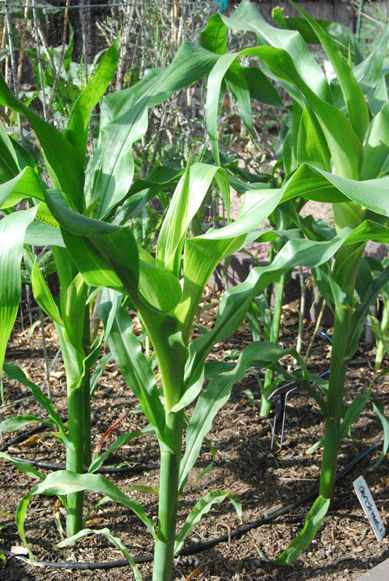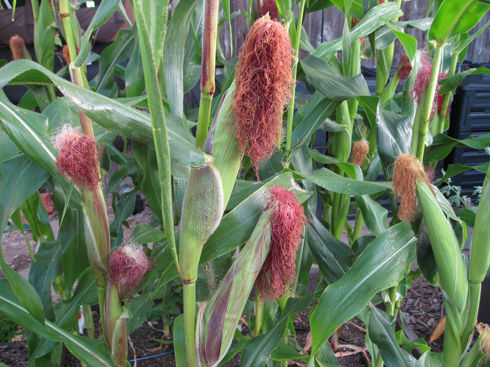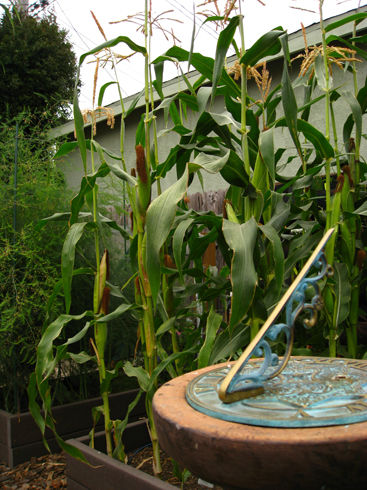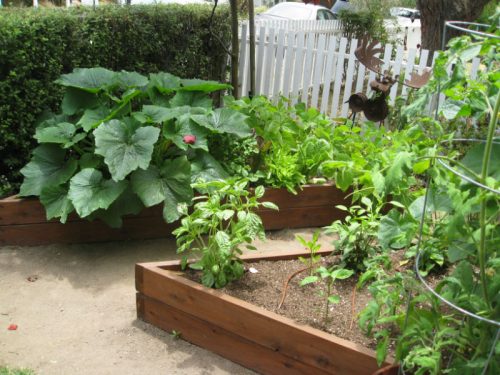Steven Duke writes into Ask Gardenerd this week: “I have an issue with corn being blown over. This year I want to plant okra around my corn to see if it can help with keeping the corn from being blown over as bad. Is this possible??”
You could plant okra around your corn, but it might not make a difference. Let’s address the probable causes for corn lodging, or falling over, first.

My first thought when you mentioned your corn was being blown over is what’s called lodging–when corn breaks and bends over right below an ear. Wheat can also have this problem (wheat and corn are in the same family, so that makes sense). Whether or not your corn plants are lodging or just being blown over by the elements, there’s a key planting tip to prevent this kind of thing from happening:
Plant Deep
Plant your corn seeds at least 1 to 1 1/2″ deep. If planted too shallow, corn tends to produce underdeveloped roots and nodal roots (the side roots that shoot out from above soil level to help stabilize corn stalks). Some First Nations cultures in the deserts plant corn seeds 12″ deeps, which is more than I’m suggesting here, but I mention this just to prove the point that corn can be planted deep without worry.
Why is it important to plant deep? Keep reading.

Moisture is Key
The next possible cause of your problem is uneven moisture or periods of dryness. If corn experiences drought stress, and the top 2″ of soil dries out, those nodal roots can do the same and will die. Lack of sufficient water also causes stalks to be thin and vulnerable as a result.
Deep planting will encourage strong root formation and you will need to water more regularly to keep the soil moist. That should solve your problem, Steven.
Use Mulch
Chip bark, or any other type of mulch will help keep soil surfaces moist during the early stages of growth. Spread a couple inches of mulch around each plant and check moisture weekly at the surface.
Side Note
Don’t forget to plant your corn in a block of at least 3×3 plants. They pollinate via the wind and require plants surrounding them in order to transfer pollen successfully from one tassel to the silks of another plant. If you plant corn in a single long row, the pollen will drift away without doing its job.

Thanks for writing in, Steven. We hope this helps you this summer when you grow corn. Happy gardening!



Pingback: YouTube: Growing Corn From Seed - Gardenerd
Thx for the reply. I’m thinking of running my garden north and south . While doing so planting deep as you suggest . My garden has been running with the lay of the land and that’s east and west. From what Sw sends are crazy. Would planting butter beans help with my corn broth. I have so many questions to ask. Another question is ground rot . From what my watermelon and catulope die out early
Ground rot is another one of the big problems I saw when I was researching your problem. I recommend boosting the biology in your soil. If you can get your hands on some active aerated compost tea that is fungal dominant, that will help break up compacted soils, and will help fight off pathogens as well. It may take a few applications to start seeing a difference, but that’s the approach I would take.